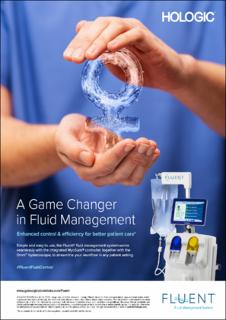| dc.contributor.author | Stafne, Signe Nilssen | |
| dc.contributor.author | Mørkved, Siv | |
| dc.contributor.author | Gustafsson, Miriam Katarina | |
| dc.contributor.author | Syversen, Unni | |
| dc.contributor.author | Stunes, Astrid Kamilla | |
| dc.contributor.author | Salvesen, Kjell Å | |
| dc.contributor.author | Johannessen, Hege Hølmo | |
| dc.date.accessioned | 2021-02-17T08:36:10Z | |
| dc.date.available | 2021-02-17T08:36:10Z | |
| dc.date.created | 2020-07-22T10:58:51Z | |
| dc.date.issued | 2020 | |
| dc.identifier.citation | BJOG: An International Journal of Obstetrics and Gynaecology. 2020, 127 (13), 1704-1711. | en_US |
| dc.identifier.issn | 1470-0328 | |
| dc.identifier.uri | https://hdl.handle.net/11250/2728578 | |
| dc.description.abstract | Objective
To assess the association between levels of vitamin D and urinary incontinence (UI) in pregnancy.
Design
A cross‐sectional study. Secondary analysis of a randomised controlled trial.
Setting
Two university hospitals in Norway.
Population
A total of 851 healthy, pregnant women >18 years in gestational weeks 18–22 with a singleton live fetus.
Methods
Data on UI were collected from a questionnaire at inclusion and serum analysis of 25‐hydroxy vitamin D (25(OH)D) was performed. Univariable and multivariable logistic regression analyses were applied to study associations between exposure and outcomes.
Main outcome measures
Prevalence of self‐reported UI, stress (SUI) and urge (UUI) or mixed UI.
Results
In total, 230/851 (27%) of the participants were vitamin D insufficient (25(OH)D <50 nmol/l) and 42% reported to have any UI. Women with 25(OH)D <50 nmol/l were more likely to report any UI (P = 0.03) and SUI (P < 0.01) compared with women with 25(OH)D ≥50 nmol/l. In a univariable logistic regression analysis, serum levels of 25(OH)D <50 nmol/l was associated with increased risk of any UI (odds ratio [OR] 1.5 with 95% CI 1.0–2.1), SUI only (OR 1.7, 95% CI 1.2–2.4), but not mixed UI or UUI only (OR 0.8, 95% CI 0.5–1.5). In a multivariable logistic regression model, serum levels of 25(OH)D <50 nmol/l were associated with a higher risk of experiencing SUI only (OR 1.5, 95% CI 1.1–2.2).
Conclusions
Serum 25(OH)D <50 nmol/l was associated with increased risk of any UI, and SUI in particular. | en_US |
| dc.language.iso | eng | en_US |
| dc.publisher | John Wiley & Sons Ltd on behalf of Royal College of Obstetricians and Gynaecologists | en_US |
| dc.rights | Attribution-NonCommercial-NoDerivatives 4.0 Internasjonal | * |
| dc.rights.uri | http://creativecommons.org/licenses/by-nc-nd/4.0/deed.no | * |
| dc.title | Vitamin D and stress urinary incontinence in pregnancy: a cross-sectional study | en_US |
| dc.type | Peer reviewed | en_US |
| dc.type | Journal article | en_US |
| dc.description.version | publishedVersion | en_US |
| dc.source.pagenumber | 1704-1711 | en_US |
| dc.source.volume | 127 | en_US |
| dc.source.journal | BJOG: An International Journal of Obstetrics and Gynaecology | en_US |
| dc.source.issue | 13 | en_US |
| dc.identifier.doi | 10.1111/1471-0528.16340 | |
| dc.identifier.cristin | 1820161 | |
| dc.description.localcode | This is an open access article under the terms of the Creative Commons Attribution‐NonCommercial‐NoDerivs License, which permits use and distribution in any medium, provided the original work is properly cited, the use is non‐commercial and no modifications or adaptations are made. | en_US |
| cristin.ispublished | true | |
| cristin.fulltext | original | |
| cristin.qualitycode | 2 | |

